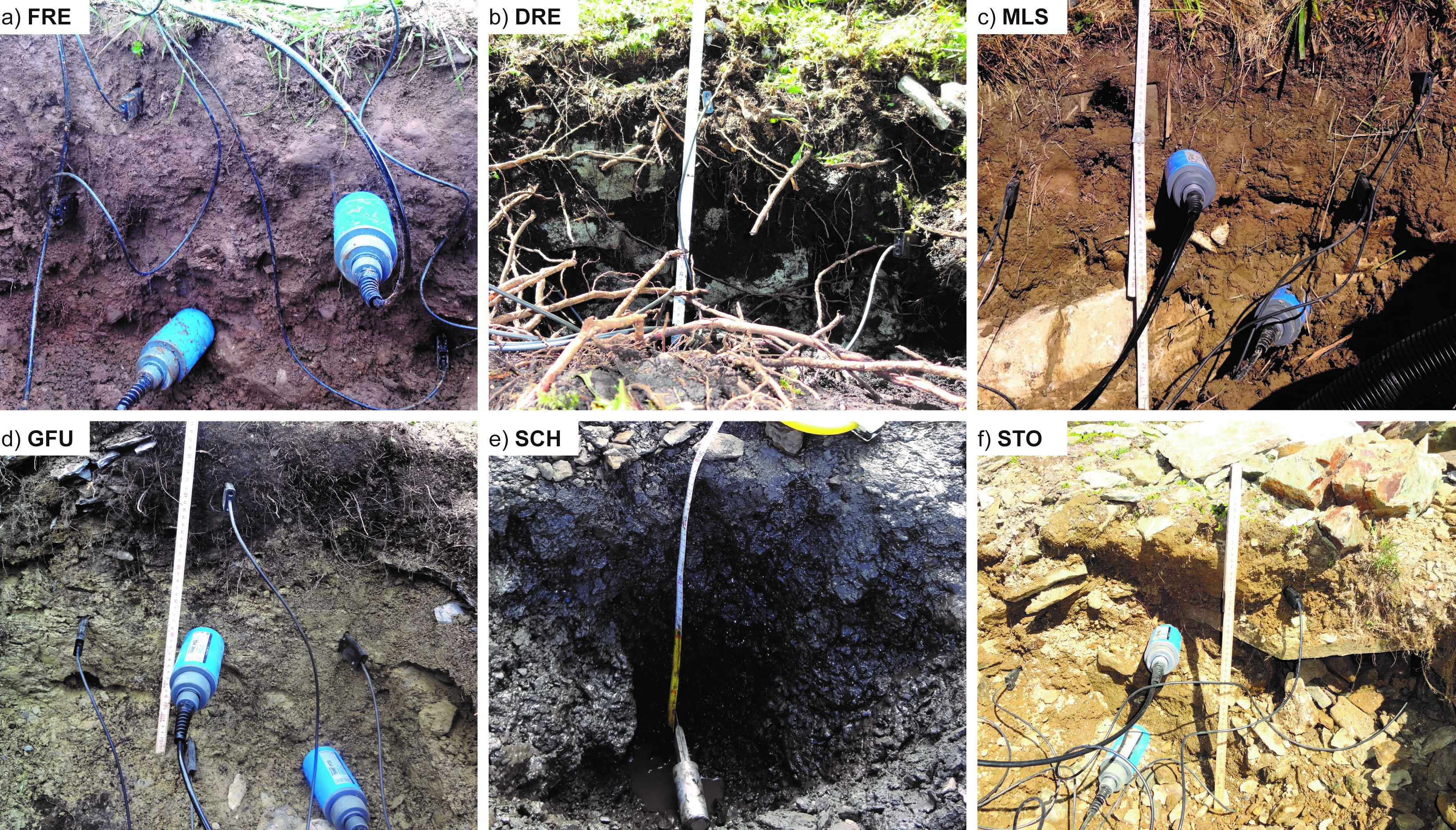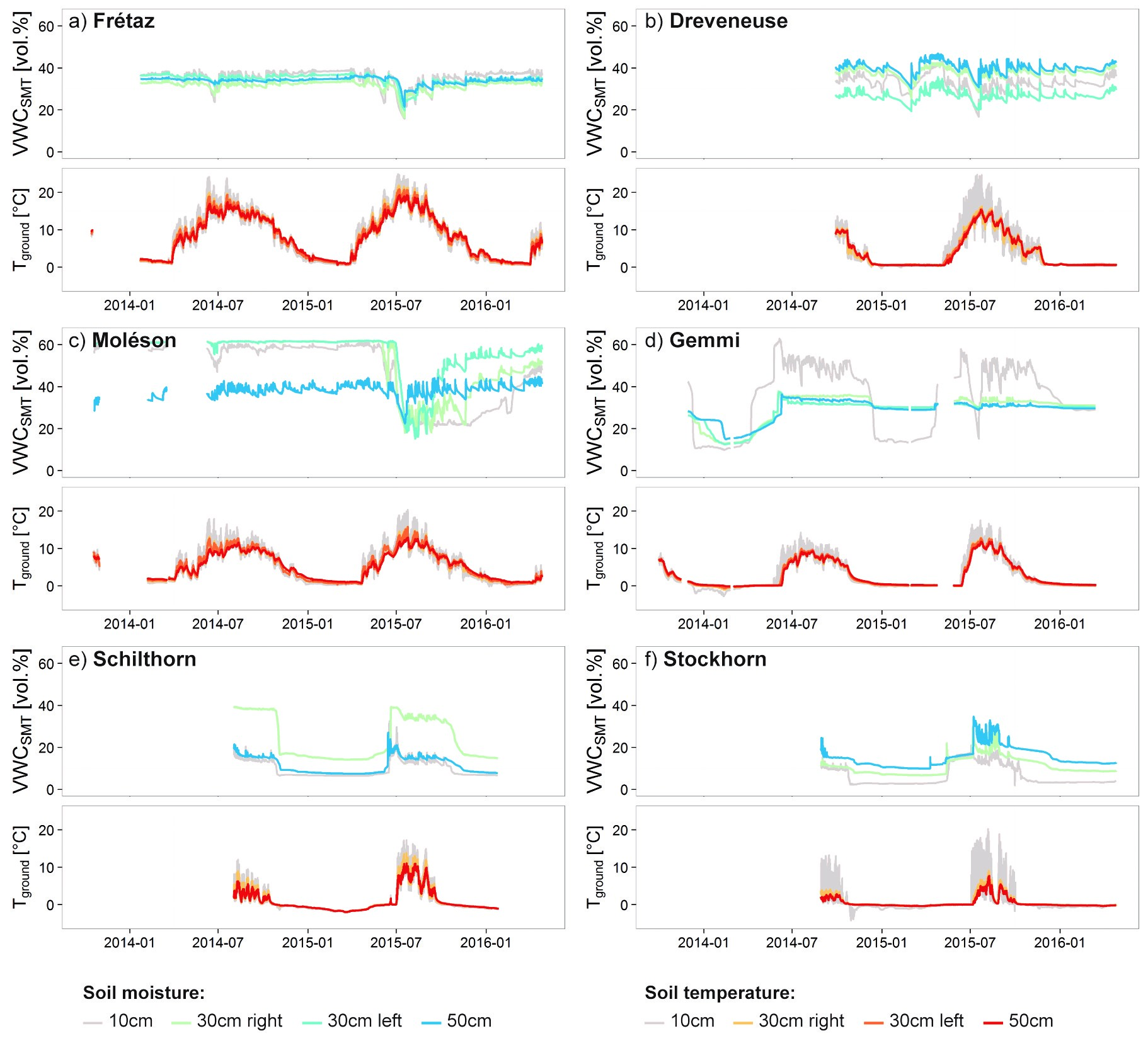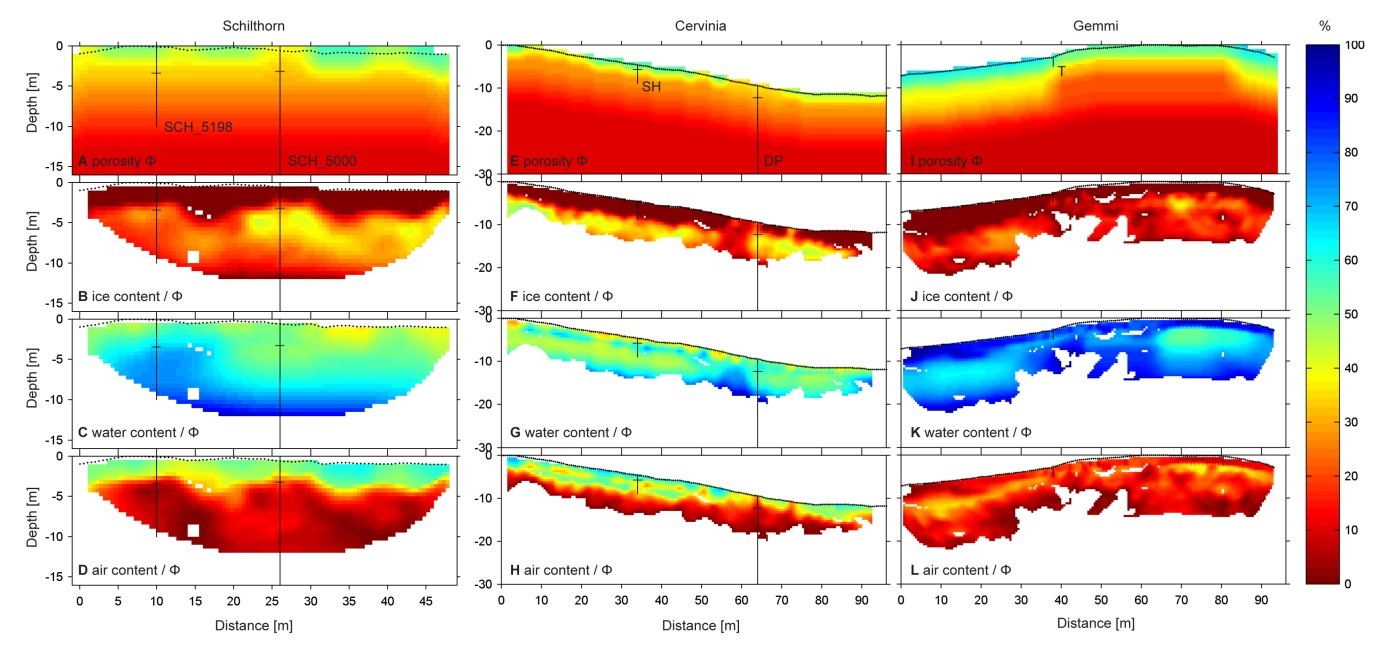Soil moisture in mountainous terrain and its influence on the thermal regime in seasonal and permanently frozen terrain (SOMOMOUNT)
In many geoscientific problems, the water content of the near subsurface plays a major role not only regarding the energy and water budget of the soils and at the atmosphere-subsurface interface, but also regarding stability issues on sloping mountainous terrain. This includes the influence of water content on the thermal and hydraulic conductivity of frozen soil as well as the influence of latent heat during freeze and thaw processes.
In spite of this importance, soil moisture is currently not measured operationally at middle or high altitudes, where a seasonally and perennially frozen subsurface (permafrost) prevails. The project will close this gap regarding data availability and process understanding about the influence of spatially and temporally variable water content on the ground thermal regime in the context of freezing and thawing processes.
Research aims:
- Setting up a network of soil moisture monitoring stations at middle and high altitudes in Switzerland
- Applying innovative geophysical approaches to determine the 2-dimensional distribution of liquid water and ice content
- Using the coupled heat and mass transfer subsurface model COUP to estimate the influence of temporally and spatially changing soil moisture on the thermal regime of partly and permanently frozen ground
Methodology of the project: Soil moisture monitoring (TDR and FDR), soil sampling and laboratory analysis, electrical resistivity tomography (ERT), refraction seismic tomography (RST), 1D soil modelling (COUP)
Study area: La Frétaz (VD), Dreveneuse (VS), Le Moléson (FR), Gemmi (VS), Schilthorn (BE), Cervinia (I) and Stockhorn (VS)
-
Illustrations
Measured soil moisture (upper panel) and ground temperature (lower panel) evolution at all SOMOMOUNT stations
Modelled 2D distribution of porosity (first row), relative ice- (second row), water- (third row) and air- (last row) contents in the ground at Schilthorn, Cervinia and Gemmi using ERT and RST measurements.
-
Publications
-
Pellet, C., Hilbich, C., Marmy, A. and Hauck, C. (2016): Soil Moisture Data for the Validation of Permafrost Models Using Direct and Indirect Measurement Approaches at Three Alpine Sites. Front. Earth Sci. 3:91. doi: 10.3389/feart.2015.00091
-
Pogliotti, P., Guglielmin, M., Cremonese, E., Morra di Cella, U., Filippa, G., Pellet, C., and Hauck, C. (2015): Warming permafrost and active layer variability at Cime Bianche, Western European Alps, The Cryosphere, 9(2), 647-661, doi:10.5194/tc-9-647-2015.
-
Duration: 2013-2016
Funded by: Swiss National Science Foundation (SNF)
Collaborators: Christian Hauck (Prof.), Cécile Pellet (PhD student), Adrian Wicki (MSc student), Philippe Aebischer (BSc student), Silvia Kaiser (BSc student), Christin Hilbich (Dr.), Coline Mollaret (PhD student)
External collaboration with: SwissSMEX (Prof. Sonia Seneviratne/Dr. Heidi Mittelbach, IAC; ETH Zürich), MeteoSuisse, AlpuG Davos, Waljag Malans, Truebner Instruments, Dr. Manfred Stähli (WSL, Birmensdorf), Prof. Andreas Kemna (University of Bonn, Germany), SNF Sinergia project TEMPS (The temporal evolution of mountain permafrost in Switzerland), PERMOS network, ARPA (Regional Environmental Protection Agency – Aosta valley, Italy)
Contact
Prof. Christian Hauck
Geography
Department of Geosciences
University of Fribourg
Chemin du Musée 4
CH–1700 Fribourg
+41 26 300 90 21



